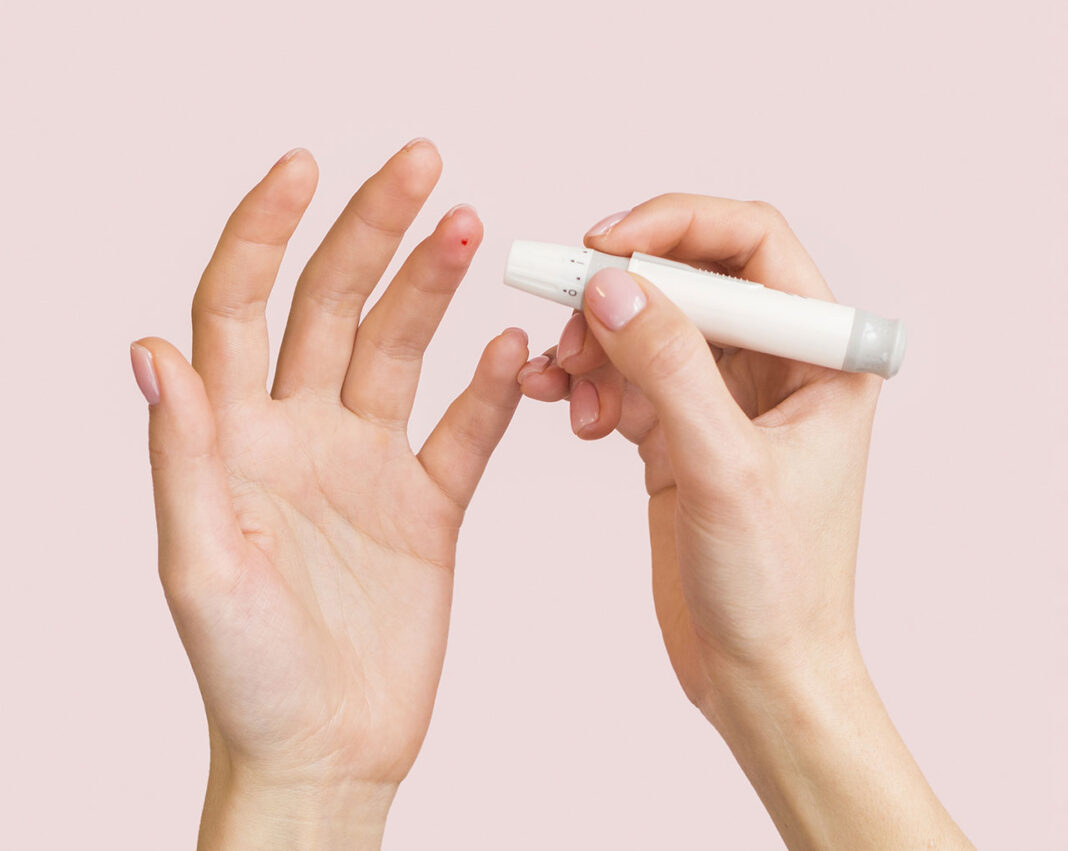The name diabetes mellitus refers to a group of diseases characterized by elevated glucose (sugar) in the blood.
Glucose is a fundamental source of energy for our body that comes from the diet and from the liver’s deposits in the form of glycogen. During fasting, the liver is responsible for releasing glucose so that there is always sugar available to be used by the body. Some organs, such as the brain, only use glucose for food.
For the glucose in the blood to enter the interior of the cells and be used as energy, it requires the action of a hormone, called insulin, to be secreted by the pancreas.
Gestational diabetes is glucose intolerance that develops during pregnancy, generally appearing during the second trimester. Between 2 and 10 pregnant women out of 100 develop gestational diabetes, although most patients who develop gestational diabetes tend to return to normal postpartum, the risk of developing diabetes in the future is higher. Gestational diabetes must be treated to avoid complications in the mother and the fetus.
Why does gestational diabetes occur?
Some of the hormones that are produced throughout pregnancy tend to cause an increase in blood sugar, with the aim that there can never be a drop in sugar that would seriously affect the fetus, in most elevated sugar levels are counteracted by increased insulin secretion from the mother’s pancreas. However, sometimes insulin secretion is not enough to normalize sugar levels, leading to diabetes.
Gestational diabetes does not cause symptoms. For this reason, it is very important to carry out the necessary tests to detect it.
Gestational diabetes can cause different complications:
In the fetus:
- If it appears from the beginning of pregnancy it can cause spontaneous abortions and fetal malformations.
- If it appears during the second and third trimesters of pregnancy, it can cause an exaggerated growth of the fetus that translates into a higher weight than expected in a normal fetus.
- Low blood sugar levels at birth.
In the mother:
- Increased risk of death during pregnancy as a result of pre-eclampsia.
- Increased risk of type 2 diabetes mellitus in the future.
While it is difficult to predict which women will develop gestational diabetes, the odds increase with the following risk factors:
- You have had gestational diabetes in previous pregnancies.
- You are overweight before you get pregnant.
- Urine sugar levels are increased.
- There is glucose intolerance.
- There is a family history of diabetes.
- They have had children who weighed 4.5 kg or more at birth.
- Stillbirths have been delivered.
- If there is too much amniotic fluid.
- If the maternal age is greater than 35 years.
In the first prenatal visit of any woman, the appropriate tests should be carried out to rule out the presence of diabetes as well as a determination of basal glucose and glycosylated hemoglobin should be carried out. This analysis will make it possible to differentiate whether the patient has diabetes prior to pregnancy or gestational diabetes.
Where there is no previous diagnosis of diabetes, a test for gestational diabetes should be carried out between weeks 24 and 28. The criteria for gestational diabetes differs from those for non-gestational diabetes given that the glucose thresholds that are associated with adverse effects in the mother, fetus or neonatal period are lower than those considered high risk for diabetes before pregnancy.
Pregnant women with gestational diabetes should:
- Measure their blood sugar levels themselves several times a day by pricking their finger.
- Follow a diet low in simple sugars according to your doctor’s recommendations. The diet must be individualized with a caloric intake according to the needs of each woman. The meals should :
- Be of a similar caloric amount each day, which is essential if you are receiving insulin treatment.
- Be distributed in the calories in at least 3 small main meals and 2 between meals, mid-morning and at bedtime.
- Be rich in fiber to avoid constipation and lower blood glucose.
- Be rich in fluids uptake.
Physical Activities
The patient should perform frequent physical exercise. Women accustomed to exercise before pregnancy can continue with what they did before becoming pregnant.
After the first trimester, exercises in which you have to lie on your back should be avoided. The increased weight of the uterus can press on important blood vessels and cause you to pass out.
Further things to consider:
- Running on hot and humid days, the rapid rise in body temperature can harm the fetus.
- Pilates can be done if they are special classes for pregnant women, but normal pilates classes concentrate a lot of exercise on the back and do not benefit pregnant women.
- Avoid excessive weight gain.
- Control your blood pressure.
- Sometimes when blood glucose is high and cannot be controlled by diet, the use of insulin is necessary.
- If insulin is used, it is important to eat at fixed times, taking a similar number of calories in each one of them throughout the days, it is also important to maintain a similar physical activity throughout the days, with all this, drops will be avoided sugar (hypoglycemia).
Women not used to exercise should consult their gynecologist in advance.
Pregnant women with gestational diabetes are required to visit their doctor more often than those without gestational diabetes. The frequency with which they should come depends on the general condition of the mother and whether or not she uses insulin. In each consultation the doctor will:
- Check on the baby.
- Ask about food.
- Check blood sugar levels.
- Modify the insulin dose (if you are on insulin).
After delivery, the mother should follow a normal diet and will not need to continue monitoring your blood sugar levels or injecting insulin if you have needed it before.
Diabetes will most likely disappear and blood sugar levels return to normal in about 6 weeks after delivery due to the disappearance of the pregnancy hormones that interfere with the action of insulin. However, women with gestational diabetes have a higher risk of developing type 2 diabetes throughout their lives, so they should undergo regular check-ups in this regard. Between 6 and 8 weeks after delivery, a follow-up test is usually done.
GESTATIONAL DIABETES DOES NOT INCREASE THE CHANCES OF A CHILD BEING DIABETIC IN THE FUTURE.
However, the children of mothers who have had high levels of sugar throughout their pregnancy, due to not having been diagnosed or due to having poor control of their sugar, are more likely to develop obesity and alterations in the metabolism of the carbohydrates.




